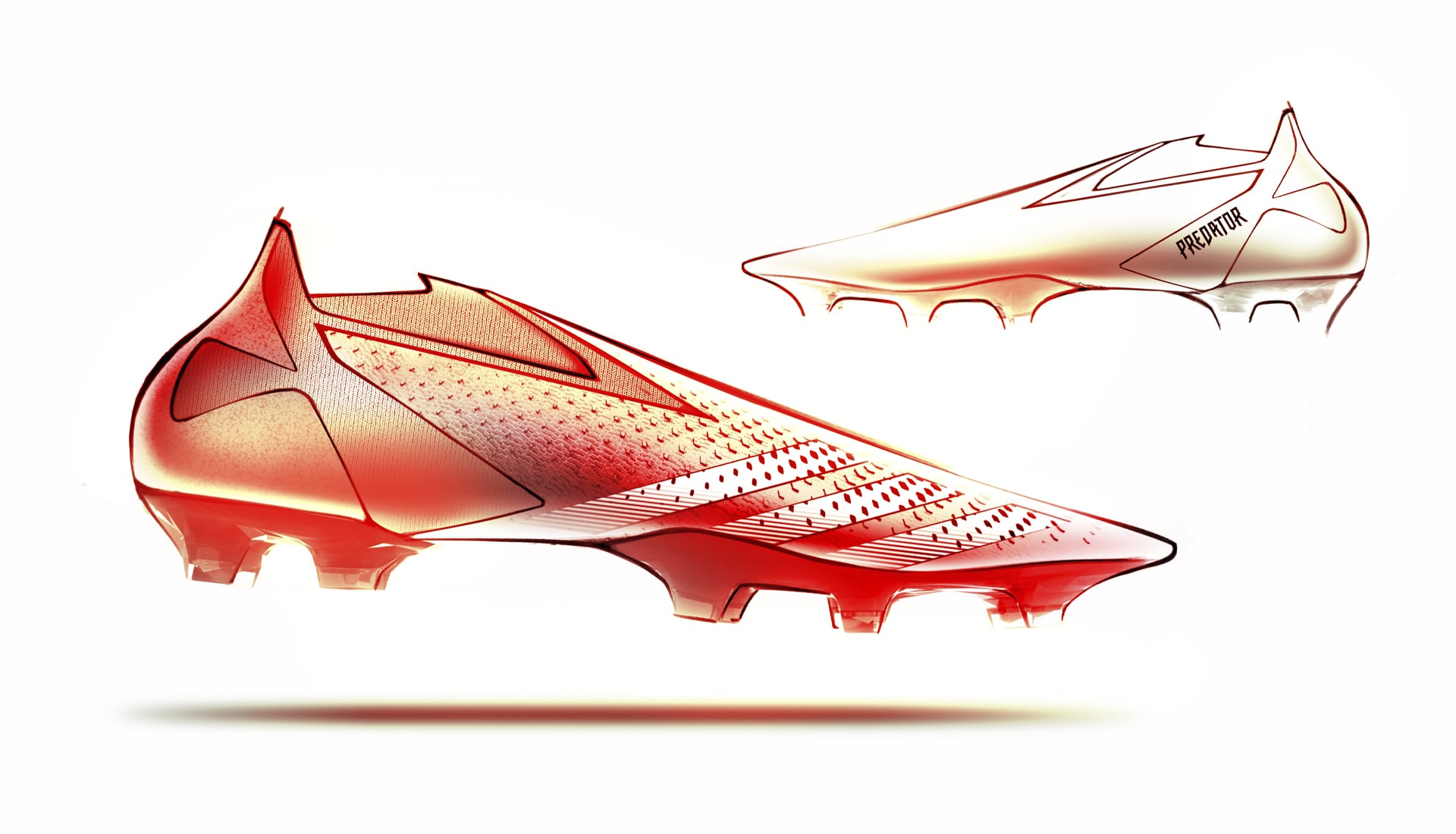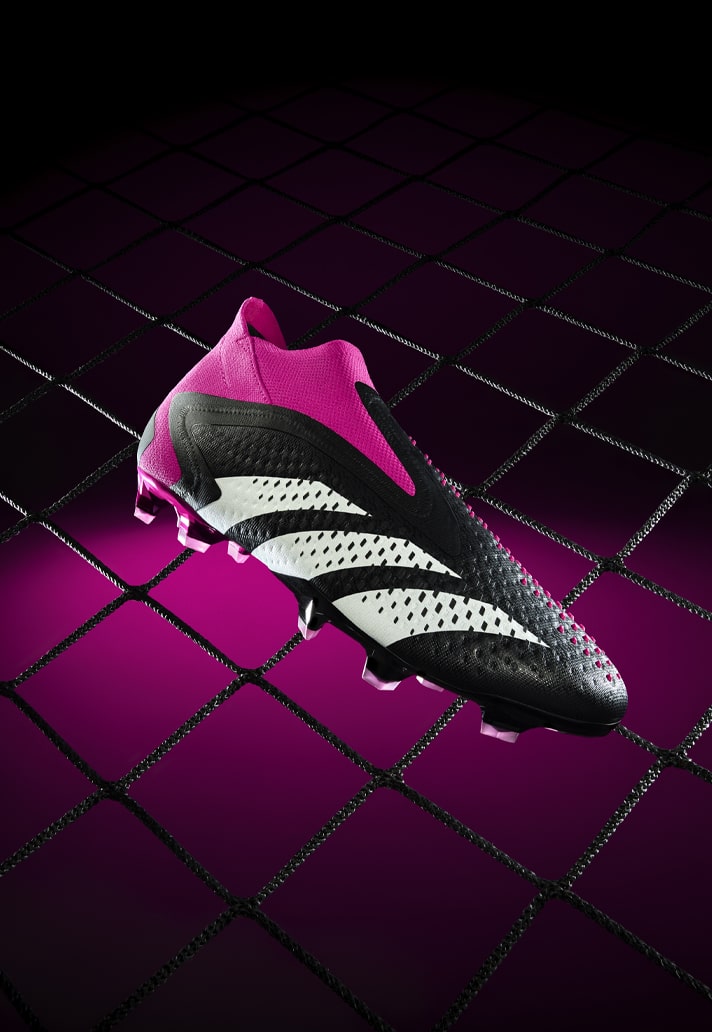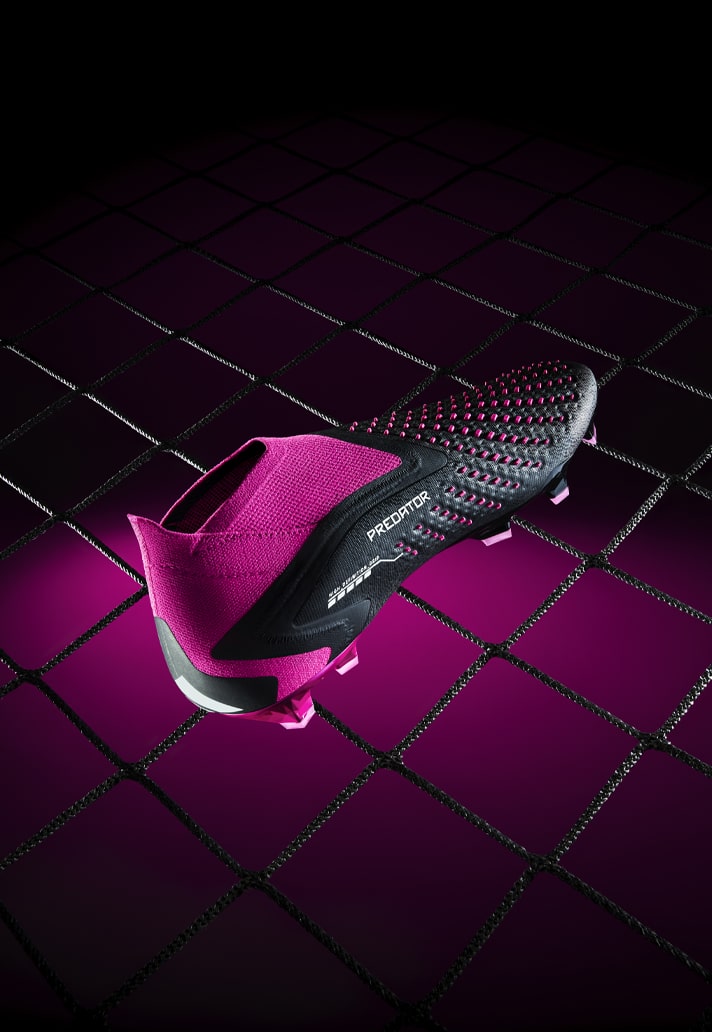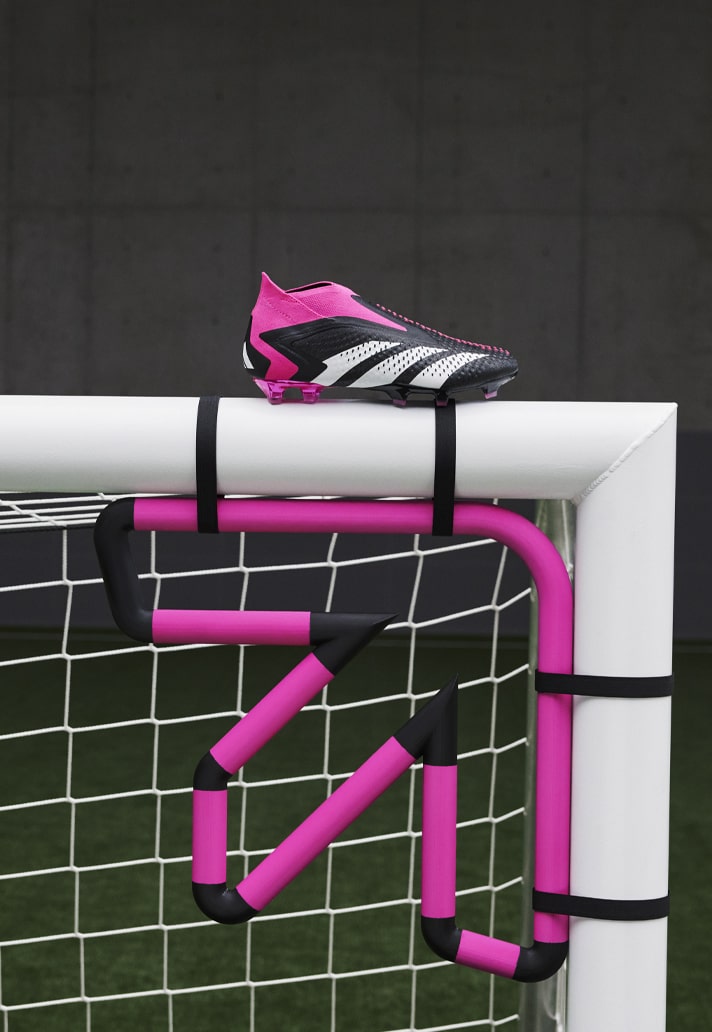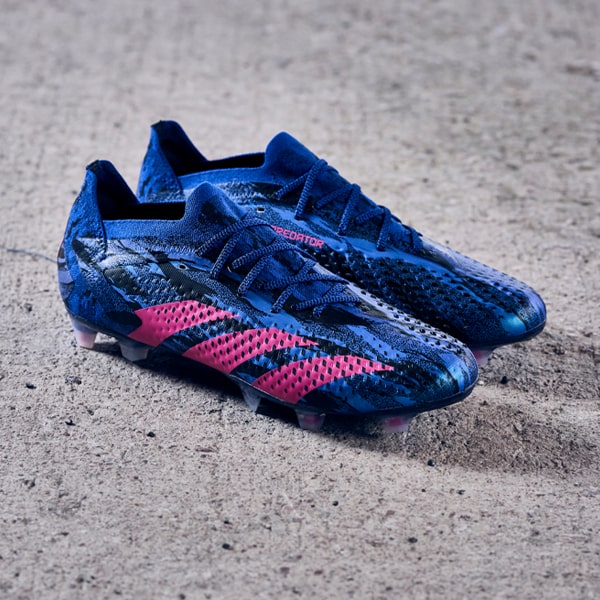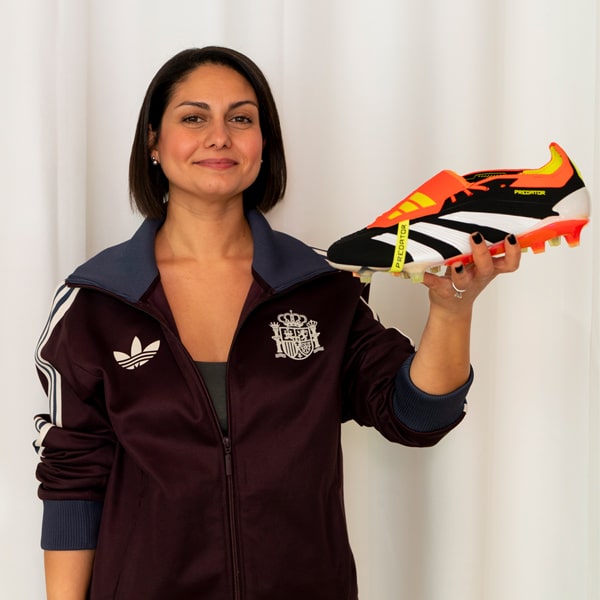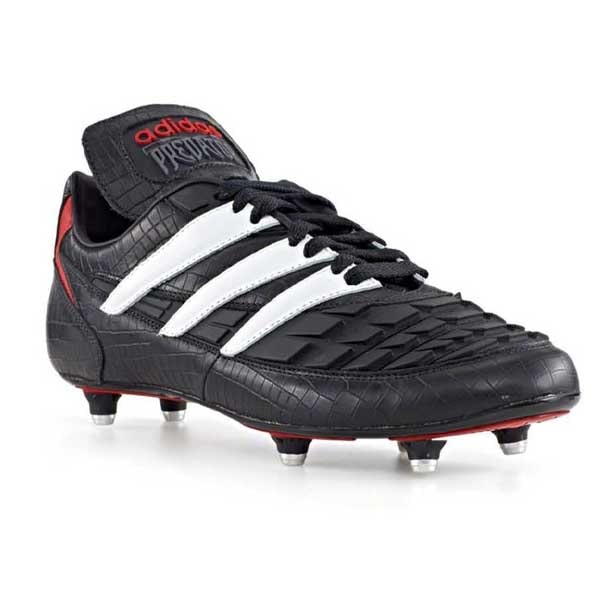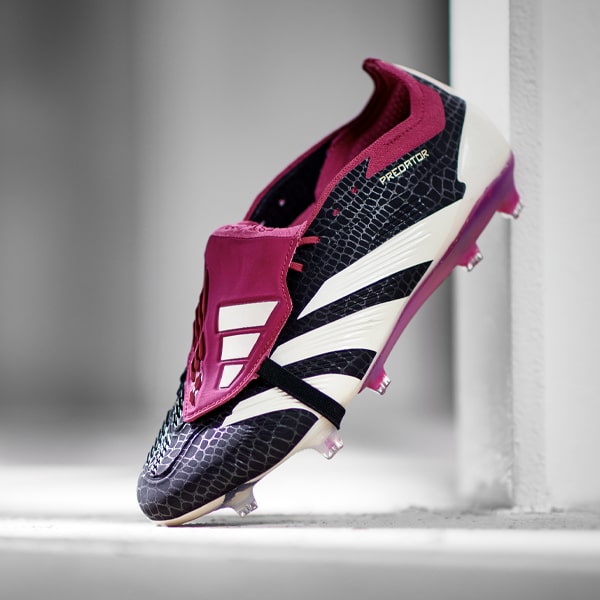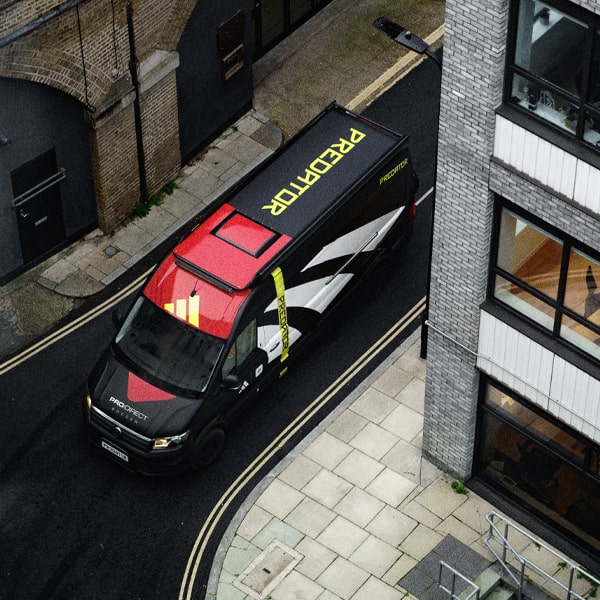The adidas Predator Accuracy has arrived as the latest generational update of the iconic silo, marking the 20th instalment in the franchise. To find out more about the story behind the new boot, we spoke with the adidas Global Design Team.
Today, adidas revealed the new Predator Accuracy, the latest generation of the prestigious Predator range, built for precision play and rooted in the core principle that made the original Predator so deadly – goal-scoring accuracy. You’d imagine that designing a new Predator must come with a certain amount of pressure, but when it’s the 20th instalment in the iconic franchise, as the Accuracy is, that pressure and expectation must be increased. But the adidas Global Design Team were able to strike the perfect balance between leaning into the heritage of the line as well as taking a progressive step forward, and we were keen to find out how.
Speaking ahead of the launch of the new Predator Accuracy with Global Category Director at adidas Football footwear, Mahsa Aryan, and Senior Footwear Designer, Jose Munoz, we got the story behind the new boot, as well as a deeper insight into the design process.
To start with, can you tell us about the story of the Predator Accuracy…
Masha Aryan: We obviously have many years of history to draw upon, so whenever we create a new adidas Predator we think back to what has been the iconic moments but also the iconic of versions that we have had in the past and who has played in them.
So, when we create, we think about the original adidas Predator that was so iconic, and it was iconic because it was the first football boot that actually had a personality. It was very cultural in nature and so we always try to give a nod to the past, knowing the legends that played in it, thinking from there all the way to the latest and greatest in terms of the talent that's on pitch today.
Of course, when we think about that the game has changed… it's a lot faster, it's become really a game of minutes and seconds and inches and so when we think about that we come up with what is it that the latest pro player needs and from there we went on to really focus more than anything on the striking pro-players – the ones that are goal scoring. That was where the Predator Accuracy was born, of the needs and wants of the best in the game as far as goal scoring is concerned. So why accuracy? It’s because we wanted to create a boot that is about precision, but consistency with that precision, and therefore accuracy.
That was where the Predator Accuracy was born, of the needs and wants of the best in the game as far as goal scoring is concerned."
From a visual perspective, the Predator Accuracy appears to have veered back towards the Mutator and Freak looks, specifically in the execution of the rubber elements. Was that a conscious choice?
Jose Munoz: Yeah definitely we also like to keep some sort of consistency within our designs. I think that’s the only way the Predator is known as a Predator and has such a fantastic heritage. For that we need to create a consistency throughout the different seasons in order to keep that Predator DNA. and now we obviously tried to take some of the good things that we've been implementing trying to elevate them and trying to refine those elements according to the new needs of the Predator Accuracy.
What are the main tech changes of note from previous versions of the Predator?
JM: There are some significant changes based on some feedback. Before the project we always sit down with our athletes but also consumers and we try to see what really worked from the previous generations. As a result of this we wanted to become lighter, and we were focusing on that kind of striking elements and on the top scoring kind of player so we really wanted to highlight that striking area. For that we have the new High Definition Grip, which features a much more simplified pattern, created from looking at scans of striking placements and then based on that we kind of define all those little elements in terms of heights, densities and sizing. You can see that they fade out towards the edges as we need less abrasion, less grip.
Then we move to the lateral side where we wanted to still keep a little bit of a grip, but not so much so that's why we have a high precision deboss together with a little bit of 3D print in order to kind of create a better interaction between the foot and ball when dribbling.
With that we wanted to utilise our hybrid touch material, which is like a coating microfibre material, just much softer and much more moldable in order to create these really high precision details across the vamp. It’s a much lighter material than we’ve used on previous generations.
As the name would suggest, this latest iteration of the Predator places emphasis on precision and consistency – why were these specific attributes selected?
MA: So, it really came from inspiration from our pro players, really focusing the attention on not just every position but specifically strikers and goal scorers and what is important to them. For them a dynamic fit is obviously very important, so that's why you’ll see the fit has changed quite… not dramatically, but it has definitely changed from the previous iteration.
Then the second aspect is very much ball handling and control, but in front of goal. So that inspiration is what gave us that need for precision whenever striking the ball and precision whenever passing or dribbling but then also consistency in that precision. So it's kind of like amalgamation of the importance of precision but then making sure that is consistently felt and and utilised by the pro player.
Just to touch on a point you mentioned there – you changed the fit – how do you go about doing that? How does that process work?
MA: Like I said, it's not a dramatic change, however what we did is we played around with the pattern. The actual materials that we use make a dramatic change and in terms of the softness of the hybrid touch as well as a minimalisation of the another rubber elements, but then on top of that we've changed the pattern in a way that allows for a more dynamic fit.
JM: Yeah, adding to that, it's all about balance and finding a combination between the high definition grip and the amount of that that allows the new material to be a lot more flexible and adaptive to the foot compared to the previous generations, but also the feet and the collar; we’re still using the Primeknit material with the two-piece collar. We simplify every single element. As you can see the silhouette is much more simple and that allowed us to basically have a better, easier entry but also keeping the consistency when it comes to the fit, specially for the for the laceless boot.
We want the Predator to feel like a Predator from the first moment you see the boot."
Further to that, at what point is the name of a new Predator selected, and what’s that process like?
MA: It's a long process because what we do is obviously have discussions both internally and externally and get a lot of, let's call it inspiration from those discussions. Then we start balancing that with what the actual boot is coming out as. So I would say even though we start off with a whole bunch of names at the beginning, that doesn't mean that's where we end up at the end. It's a long, arduous process as you can probably imagine, but it’s very important and through the different iterations and bouncing off each other more than anything that’s how we ended up with accuracy for this launch.
Does it have to come down to a vote sometimes to see whose suggestion wins?
MA: Sometimes [laughs] You know, sometimes it gets a little bit heated so we have to democratise a little bit!
How much of these designs is about looking at what worked on the last versions and tweaking that as opposed to coming in with all new ideas?
JM: In the end it comes back to what I mentioned previously in trying to keep a little bit of consistency from a visual point of view. We want the Predator to feel like a Predator from the first moment you see the boot, that character.
As we’ve said, it’s one of the first ever franchises to really have a DNA and a character on its own and we tried to keep that across the seasons. One thing that’s carried through from the Predator Edge in this case is the geometry and the placements of the patterns and this was combined with the Freak and Mutator in order to evolve the new generation.
Talk us through the choice of black and pink as the launch colourway?
JM: Again, we wanted to bring sort of a crash between something OG, very classic with black base and white branding – we wanted to be very visible on pitch. I think we’ve already seen how good the new Three Stripes execution looks on pitch. Then we wanted to bring a kind of vibrant and modern touch base on the modern game on the new consumer with a pink sock highlighting some of the key USP’s of the boot, so the high definition grip on the medial side but also our colour with the PrimKnit.
Those Three Stripes definitely have a bit of the Accelerator about them… what was the thinking behind that?
JM: We need to celebrate our branding the most I would say. Obviously we need to look back to the heritage and what Predator means for the Predator connoisseur. In this case branding plays a big role. Those Three Stripes are more organic and dynamic, more aggressive as well, kind of leaning forward a little bit and then wrapping around the bottom, so we’re pretty happy with how it turned out.
MA: The only thing I would add to that is that we really tried to make – again paying homage to the past – we really tried to bring back the DNA of the blocky elements of the Predator, so we play with the placement as well as the thickness of the stripes in the badge of sport, and then even having it wrapped to the bottom because whenever you see players play on pitch we want to have that very blocky interesting view that you always have had in Predators past.
What’s the ultimate mark of success for you? Do you check social media on launch day or avoid it?
JM: We want it to be visible and we want it to be out there and to be the number one top scoring boot, and that's the goal basically. Hopefully in 10-20 years’ time we can look back and feel proud of what we achieved this time around.
MA: I would say that's the most exciting part is seeing it on pitch, seeing it yes on social media, but seeing it visible in games is for me, at least, the most exciting part – seeing the end product. Hopefully the players like it. We've gotten a lot of very positive feedback already so obviously at that point you feel like your job is done.
I actually had the opportunity to show the Accuracy very early on to Jude Bellingham – who just scored in them, which obviously takes it to the next level!"
In a broader sense, is it intimidating to work on a silo as iconic and important as the Predator?
MA: I would say it's definitely not intimidating, it's a lot more exciting and I think it that also comes from having a team that is so passionate about the brand and the franchise. Predator obviously has just such a strong history but at the same time you can derive inspiration from anything and our main muse of inspiration definitely becomes our pro players. We consistently have conversations with them so they keep us very much informed of what's working what's not working and more than anything what is the future of the sport on pitch. We derive a lot of inspiration from that.
JM: Yeah, it's definitely exciting. I think you need that thrill when you're designing something like the Predator.
What’s your favourite part of the whole design process?
MA: My favourite part very honestly is speaking throughout the process with pro players. I actually had the opportunity to show the Accuracy very early on to Jude Bellingham – who just scored in them, which obviously takes it to the next level! But that's definitely the best part is first of all getting them in the hands as prototypes as well as throughout the process of getting them in the hands of pro players and seeing them get excited about the new iteration and really have that collaborative approach with pro players would be my favourite.
JM: As a designer the early stages of the process is the exciting part, but at same time the most stressful because obviously you need to create. But I would say the nicest part of the process is when you start to see the first prototypes and how everything that you see on the screen basically becomes reality and you get to see the evolution of all those iterations is really nice.
Pick up the adidas Predator Accuracy now at prodirectsport.com/soccer
